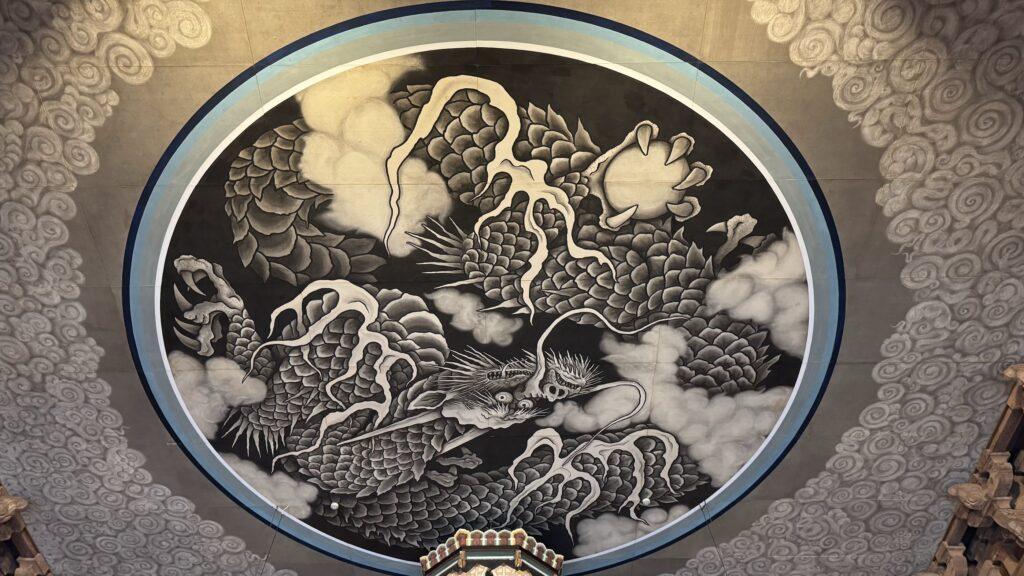Just an hour from Tokyo, Kamakura offers the perfect escape for a day trip filled with history, culture, and coastal charm. Once the political heart of medieval Japan, this seaside town is now a popular destination known for its iconic Great Buddha, ancient temples, traditional streets, and scenic beaches.
Whether you’re curious about what to see, how to get around, or how much time and money to budget, this guide will walk you through everything you need to plan a smooth and rewarding visit. From must-see highlights to travel tips and access details, discover the best things to do in Kamakura—effortlessly.
Tokyo Travel Assist offers a Essentials of Kamakura Tour
Table of Contents
ToggleTop Things to Do in Kamakura
You’ll find plenty to explore within a short distance in Kamakura. In the following, you’ll discover the must-visit spots—from iconic temples and shrines to charming shopping streets and scenic coastal areas. Each location comes with practical details on access, key highlights, and suggested visit times to help you make the most of your day trip.
Great Buddha (Kotokuin Temple)
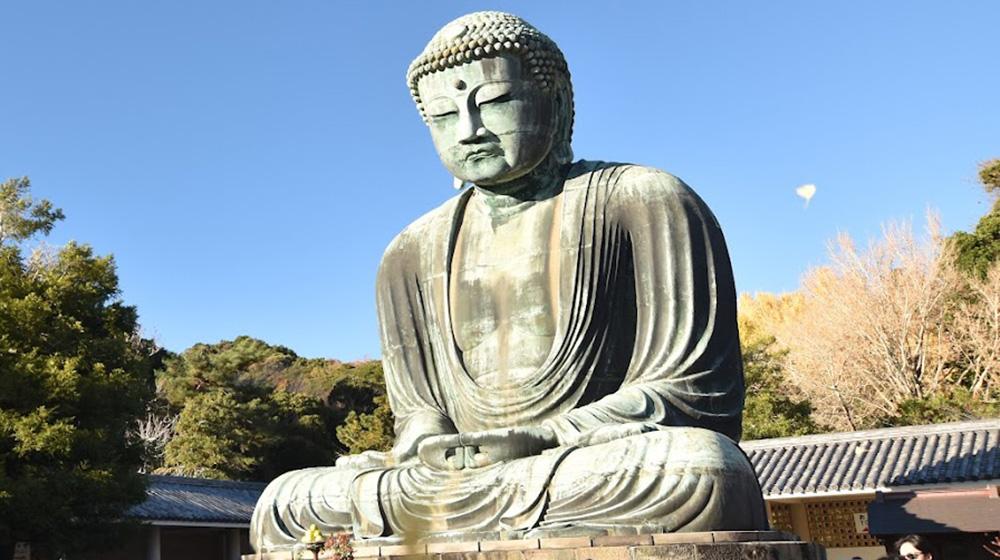
The Great Buddha, or “Daibutsu,” of Kamakura is a striking bronze statue that embodies Japan’s spiritual and artistic heritage. Located at Kōtoku-in Temple, this monumental figure has stood in the open air for centuries, witnessing the passage of time and the resilience of Japanese culture.
From Wood to Bronze: The Evolution of the Great Buddha
The origins of the Great Buddha trace back to the 13th century when an initial wooden statue was enshrined within a grand hall. However, this structure was later replaced with a more durable bronze version in 1252. Over time, natural disasters, including powerful storms and a tsunami, led to the destruction of the surrounding hall, leaving the statue exposed as it remains today.
A Masterpiece of Buddhist Art
Standing approximately 11.3 meters (37 feet) tall and weighing around 121 tons, the Kamakura Daibutsu is the second-largest seated Buddha in Japan, following the one in Nara. One of its most captivating features is its deep blue eyes, a unique characteristic symbolizing wisdom and purity. While the statue was originally covered in gold leaf, only a faint trace remains on its right cheek, hinting at its once-glorious appearance.
A Spiritual and Cultural Landmark
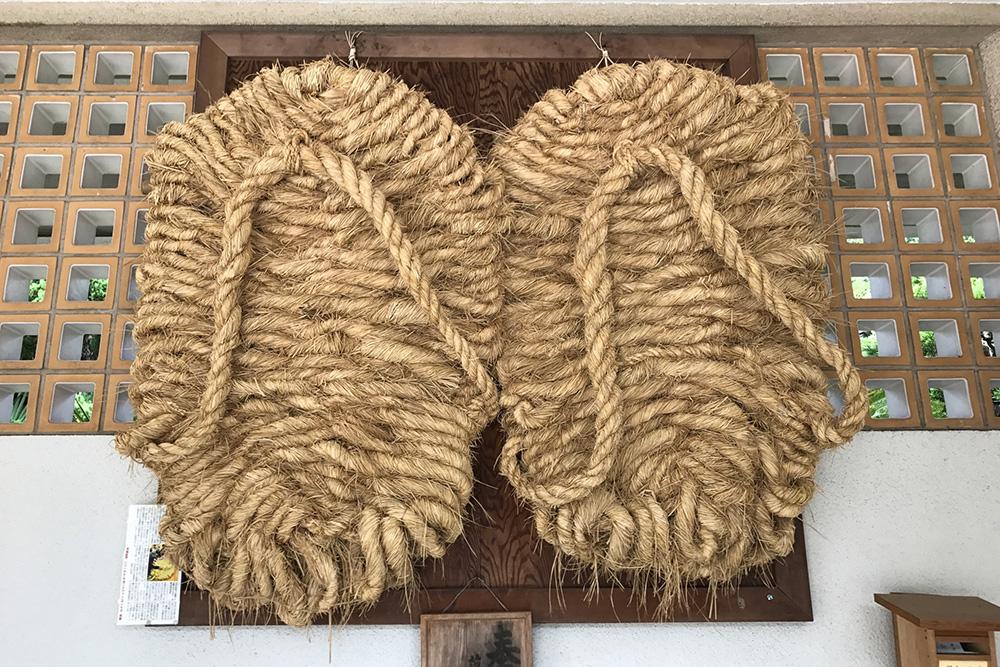
The Great Buddha is housed in Kōtoku-in, a temple of the Jōdo (Pure Land) sect of Buddhism, which emphasizes universal salvation through the recitation of “Namu Amida Butsu” (Praise to Amida Buddha). Visitors can explore the statue’s hollow interior for a small fee, gaining insight into its construction. At the site, large flat stones—remnants of the original temple hall—serve as seating areas for guests. Nearby, a giant pair of straw sandals, dedicated with the hope that the Buddha may symbolically walk the land and bring happiness to all, adds a unique cultural touch.
| Name | Great Buddha (Kotokuin Temple) |
| Address | 4-2-28, Hase, Kamakura, Kanagawa 248-0016 (map) |
| Opening Hours | ●April–September 8:00 a.m.–5:30 p.m. ●October–March 8:00 a.m.–5:00 p.m. Visitors may enter up to 15 minutes before the temple closes. ●To enter the interior of the Great Buddha statue 8:00 a.m.–4:30 p.m. Visitors may enter up to 10 minutes before closing time. ●Temple shop (office) 8:30 a.m.–4:45 p.m. (year-round) |
| Admission Fees | General admission:¥300 Child admission(age6-12):¥150 Enter the interior of the Great Buddha statue:Additional ¥50 |
| Travel Time | From Kamakura Station, take the Enoshima Electric Railway toward Fujisawa and get off at Hase Station (3rd stop, ~7 min, 7-minute walk from Hase Station |
| Website | https://www.kotoku-in.jp/en/ |
Tsurugaoka Hachimangu: The Heart of Kamakura’s Samurai Legacy
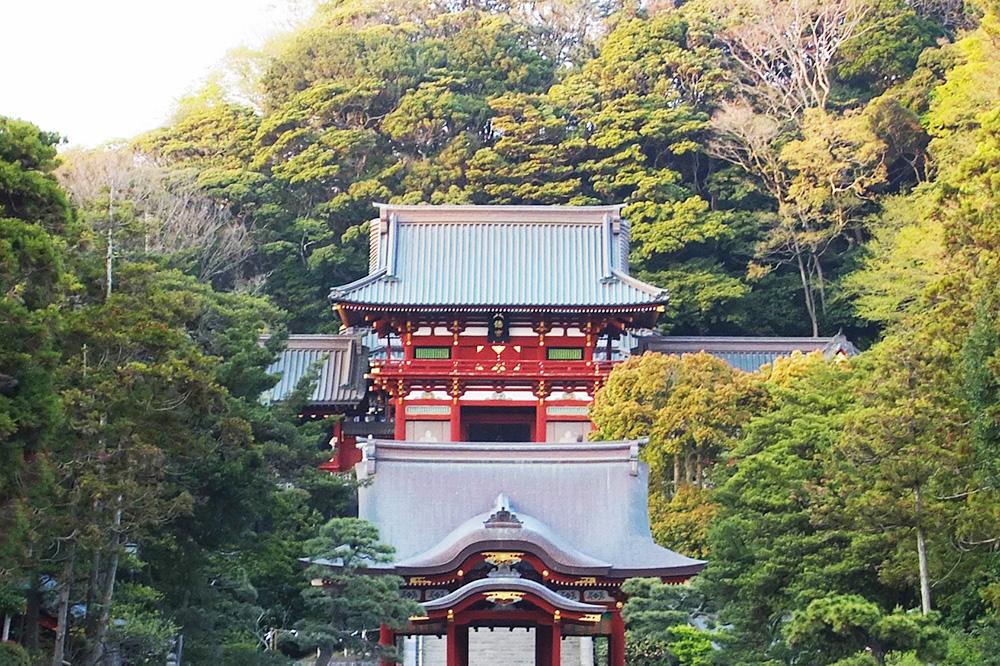
Tsurugaoka Hachimangu is Kamakura’s most significant Shinto shrine, deeply tied to the city’s samurai heritage. Located a short walk from Kamakura Station’s east exit, visitors follow Wakamiya Ōji Street, a historic approach leading to a striking vermilion torii gate, marking the entrance to this revered site.
A Shrine Rooted in Samurai History
Originally founded in 1063, Tsurugaoka Hachimangu was established by Minamoto no Yoriyoshi as an act of gratitude for military victory. It was initially located near Yuigahama Beach but was later relocated in 1180 by his descendant, Minamoto no Yoritomo, who sought to honor his lineage and solidify the shrine as a spiritual and political center. After a fire in 1191, the shrine was rebuilt on a terraced hillside, forming the grand upper and lower shrine layout seen today.
A Center of Power and Worship
During the Kamakura period, Tsurugaoka Hachimangu was more than just a place of worship; it was a political and spiritual hub for the samurai class. Important governmental decisions were often made here, with divine will considered in policy-making. The shrine’s prominence led to the spread of Hachiman worship across Japan, influencing warriors throughout the country. In the Edo period, Tokugawa Ieyasu’s efforts to restore and protect the shrine helped transform Kamakura into a popular cultural destination.
Traditions and Sacred Sites
The shrine grounds host multiple smaller shrines dedicated to various deities. Shirahata Shrine is known for blessings in academic success and victory, while Maruyama Inari Shrine is associated with prosperity. Hataage Benzaiten Shrine attracts those seeking artistic growth, and Masako Stone is revered for love, fertility, and safe childbirth.
One of the shrine’s most renowned events is the annual Reitaisai, held from September 14–16. This grand festival preserves samurai traditions, featuring Yabusame, a horseback archery ritual symbolizing discipline and strength. Tsurugaoka Hachimangu remains a lasting symbol of Kamakura’s history, offering visitors a profound glimpse into Japan’s samurai past and spiritual traditions.
| Name | Tsurugaoka Hachimangu |
| Address | 2-1-31, Yukinoshita, Kamakura-shi, Kanagawa 248-8588 (map) |
| Opening Hours | ●April–September 8:00 a.m.–5:30 p.m. ●October–March 8:00 a.m.–5:00 p.m. Visitors may enter up to 15 minutes before the temple closes. ●To enter the interior of the Great Buddha statue 8:00 a.m.–4:30 p.m. Visitors may enter up to 10 minutes before closing time. ●Temple shop (office) 8:30 a.m.–4:45 p.m. (year-round) |
| Admission Fees | General admission:¥300 Child admission(age6-12):¥150 Enter the interior of the Great Buddha statue:Additional ¥50 |
| Travel Time | 10-minute walk from the east exit of JR Kamakura Station |
| Website | https://www.hachimangu.or.jp/en/ |
Hasedera Temple: A Spiritual and Scenic Retreat in Kamakura
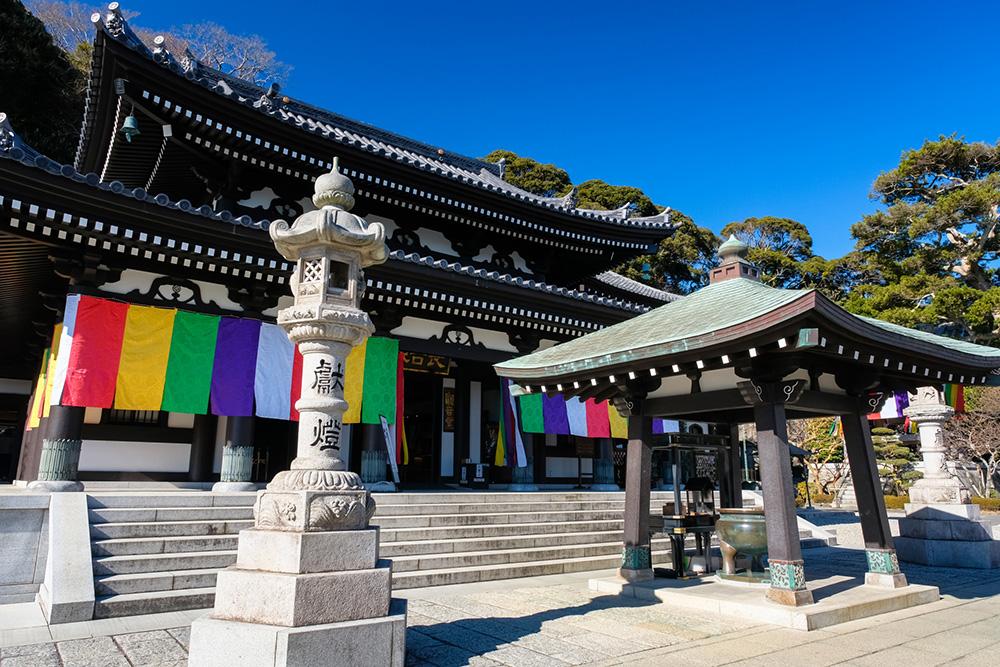
Hasedera Temple, one of Kamakura’s oldest temples, is a revered site known for its deep spiritual significance and breathtaking natural beauty. Originally founded in the 8th century, it was inspired by Nara’s Hasedera Temple and has since been a place of worship and pilgrimage for centuries.
Home to One of Japan’s Largest Wooden Kannon Statues
The temple’s principal statue, an 11-faced Kannon Bodhisattva, is one of the largest wooden Buddhist statues in Japan, standing at an impressive 9.18 meters. According to legend, it was carved from the same sacred camphor tree as the statue in Nara’s Hasedera, reinforcing its spiritual connection to the original temple. As the fourth station of the Bandō 33 Kannon Pilgrimage, Hasedera has drawn visitors seeking blessings since the Edo period. Special ceremonies are held on the 18th of each month, with the most vibrant taking place on December 18, when the temple hosts the traditional “Toshi no Ichi” market, selling lucky charms for the new year.
Cultural Treasures and Sacred Spaces
Beyond its main deity, Hasedera houses numerous sacred artifacts. The temple’s museum, the Kannon Museum, displays rare treasures, including a set of 33 Kannon statues depicting the Bodhisattva’s various manifestations. The temple also preserves a historical bronze bell, ranking among Kamakura’s most significant, alongside those at Engakuji and Kenchoji. Visitors can also explore the Benten-do Hall, dedicated to Benzaiten, the goddess of fortune and wisdom. Deeper inside lies the Benzaiten Cave, where statues of the goddess and her 16 celestial attendants are intricately carved into the rock walls.
Seasonal Beauty and Unique Experiences
Hasedera is renowned for its seasonal scenery, making it a must-visit year-round. From late May to late June, hydrangeas blanket the hillside, attracting thousands of visitors. During autumn, the temple hosts a special nighttime illumination event, where vibrant fall foliage is beautifully lit against the twilight sky. A scenic observation deck offers sweeping views of Kamakura’s coastline, adding to the temple’s allure. Another highlight is the “Ryoen Jizo” statues—small, endearing figures representing good fortune in relationships. Scattered in three locations within the temple grounds, it is believed that discovering all three brings luck in forming meaningful connections.
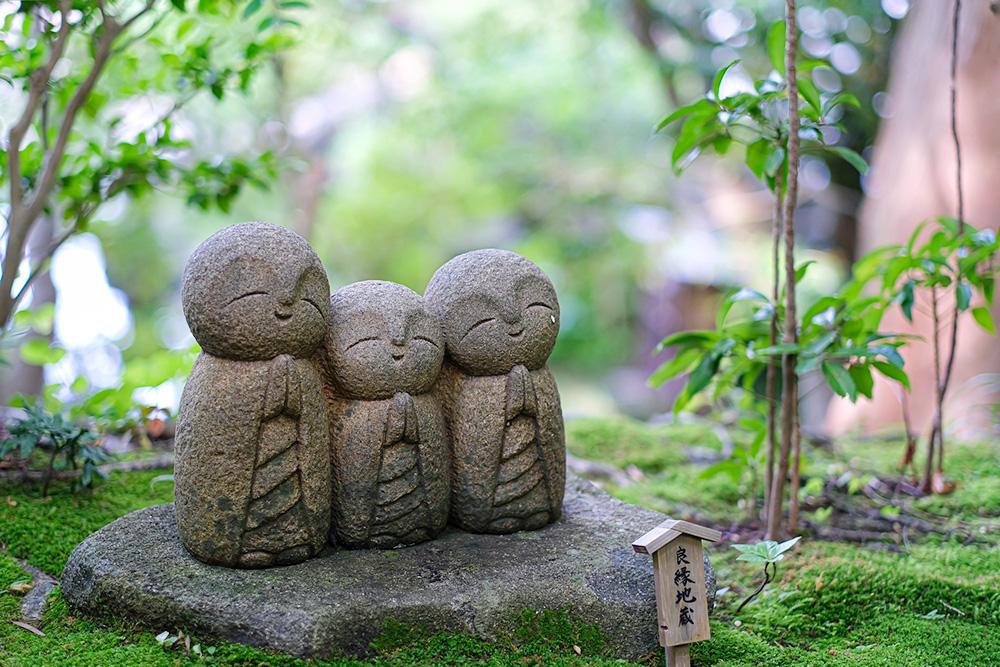
For those seeking a deeper spiritual experience, Hasedera also offers opportunities to practice “shakyo” (sutra copying), allowing visitors to engage in a meditative and reflective activity within this sacred space.
| Name | Hasedera |
| Address | 3-11-2 Hase,Kamakura, Kanagawa (map) |
| Opening Hours | July – March : 08:00 – 17:00 (last entry at 16:30) April – June : 08:00 – 17:30 (last entry at 17:00) |
| Admission Fees | Adults : ¥400 Children : ¥200(Age 6 – 11) |
| Travel Time | 5-minute walk from Hase Station |
| Website | https://www.hasedera.jp/en/ |
Hōkoku-ji Temple: The Serene Bamboo Sanctuary of Kamakura
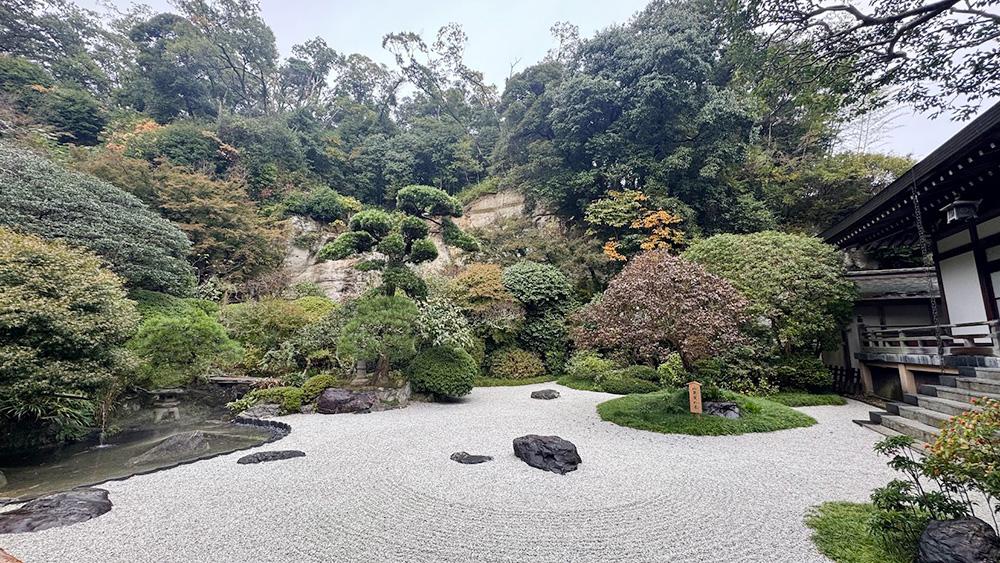
Hōkoku-ji Temple, often referred to as the “Bamboo Temple,” is a hidden gem in Kamakura, renowned for its tranquil bamboo grove. This Zen temple offers visitors a peaceful retreat surrounded by nature, making it a perfect escape from the bustling city.
A Temple Rooted in History
Founded in the 14th century, Hōkoku-ji has historical ties to the influential Ashikaga and Uesugi clans. While the exact details of its origins remain debated, it is believed to have been established by a high-ranking samurai family and later nurtured by Zen monks. The temple’s principal deity is Shakyamuni Buddha, and although many of its original treasures were lost to fire, some important artifacts have been preserved and are now housed at the Kamakura Museum of National Treasures.
The Enchanting Bamboo Grove
The highlight of Hōkoku-ji is its mesmerizing bamboo forest, with towering stalks creating a dreamlike atmosphere. Visitors can stroll through the pathways, admire the seasonal flora, and experience the ever-changing beauty of nature. A traditional Japanese rock garden near the entrance sets the tone for the temple’s meditative ambiance, preparing visitors for the serene sights ahead. Within the temple grounds, there are also historic graves, stone monuments, and beautifully landscaped gardens that showcase Japan’s aesthetic harmony.

A Tranquil Zen Experience
Beyond its scenic beauty, Hōkoku-ji offers a deep sense of tranquility, making it an ideal place for quiet reflection. The temple’s tea house provides an opportunity to enjoy matcha green tea while taking in the serene view of the bamboo grove. The combination of nature, history, and spiritual calm makes this temple a must-visit for those seeking a deeper connection with Japan’s Zen heritage.
| Name | Houkokuji |
| Address | 2-7-4 Jomyoji, Kamakura, Kanagawa(map) |
| Opening Hours | 9:00~16:00 Closed 12/29~1/3 Closed In case of bad weather |
| Admission Fees | ¥400 Matcha Fees : ¥600(with dry Japanese sweets) |
| Travel Time | Approx. 7 minutes by taxi Approx. 12 minutes by Keikyu Bus (bound for Kamakura-reien-shoumenmae-tachiarai・kanazawahakkei / Highland) to Joumyoji bus stop ↓ Approx. 3 minutes’walk from Joumyoji bus stop to Houkokuji Temple |
| Website | https://houkokuji.or.jp/en/ |
Meigetsu-in: Kamakura’s Enchanting Hydrangea Temple
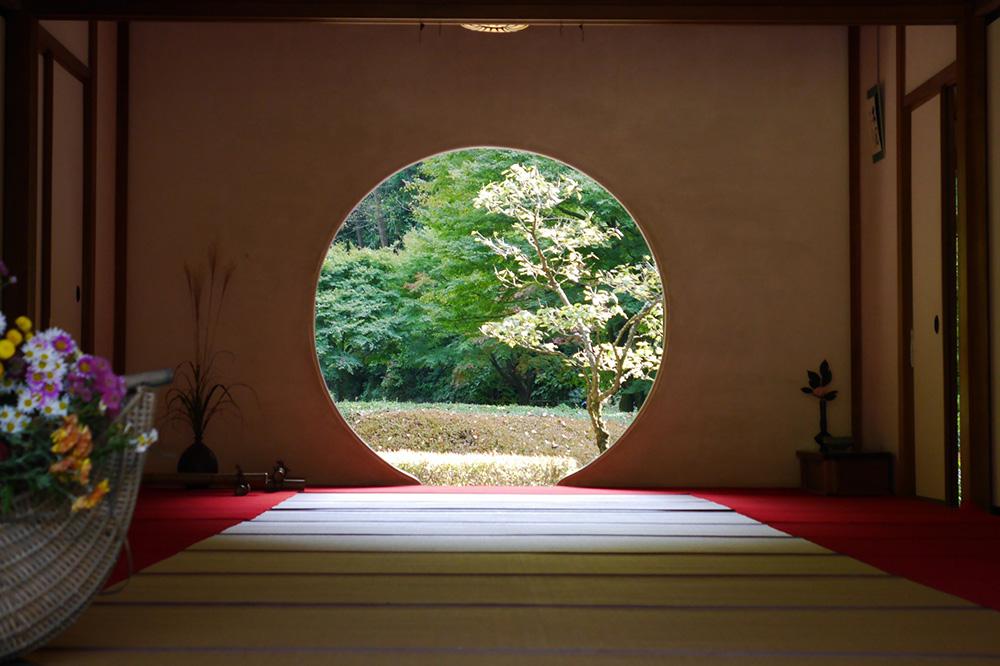
Meigetsu-in, nestled in a quiet valley in northern Kamakura, is a Zen temple known for its stunning seasonal beauty and deep historical roots. Originally established as a sub-temple of the now-lost Zenkō-ji, it has survived centuries of change and remains one of Kamakura’s most beloved spiritual sites.
A Temple of Historical Transformation
Meigetsu-in traces its origins to the 12th century when it was founded as a place of memorial for fallen warriors. It later became part of a larger temple complex, which was expanded in the 14th century under the direction of the ruling samurai class. Although the main temple was eventually abandoned during the Meiji era, Meigetsu-in remained intact, preserving its legacy as a key Zen site.
The Famous Hydrangea Bloom
Revered as the “Hydrangea Temple,” Meigetsu-in is most famous for its thousands of hydrangea bushes, which transform the grounds into a sea of vibrant blue each June. The unique hue of these flowers is so distinctive that it is often referred to as “Meigetsu-in Blue.” This breathtaking seasonal display draws countless visitors who come to experience the temple’s serene and dreamlike atmosphere.
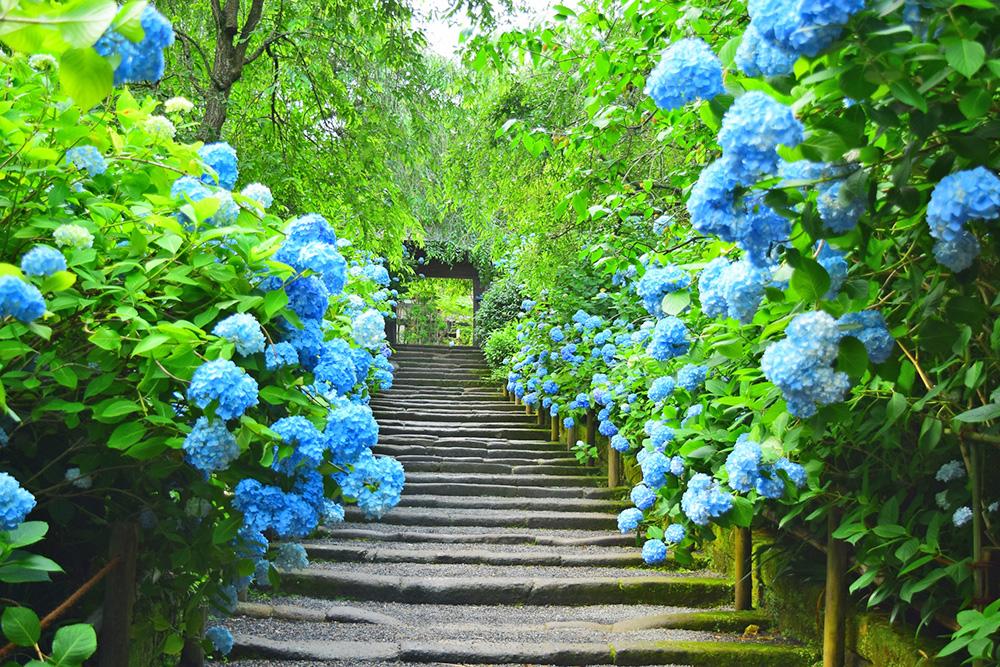
Zen Aesthetics and Hidden Wonders
Beyond its floral splendor, Meigetsu-in offers visitors a glimpse into Zen philosophy through its architecture and landscapes. One of its most famous features is the “Window of Enlightenment,” a perfectly circular window in the main hall that symbolizes harmony, infinity, and self-reflection. Additionally, the temple grounds house one of Kamakura’s largest rock-cut caves, known as the Meigetsu-in Yagura, believed to be the tomb of a 14th-century samurai lord. Visitors who come during limited seasonal openings can also explore a stunning hidden garden, where irises bloom in early summer and autumn leaves paint the landscape in warm hues.
With its tranquil ambiance, historical intrigue, and breathtaking scenery, Meigetsu-in remains one of Kamakura’s most cherished destinations, offering a perfect blend of nature and spirituality.
| Name | Meigetsuin Temple |
| Address | 189 Yamanouchi, Kamakura, Kanagawa (map) |
| Opening Hours | Opens at 9:00am – closes at 4:00pm *Times may change in June when hydrangeas bloom |
| Admission Fees | High school students and above: ¥500 Elementary and junior high school students: ¥300 【The garden behind the main hall is open】 ¥500 in addition to the admission fee |
| Travel Time | 10 minutes walk from JR Kita-Kamakura Station |
| Website | None |
Zeniaraibenzaiten Ugafukujinja Shrine: Kamakura’s Money-Washing Shrine
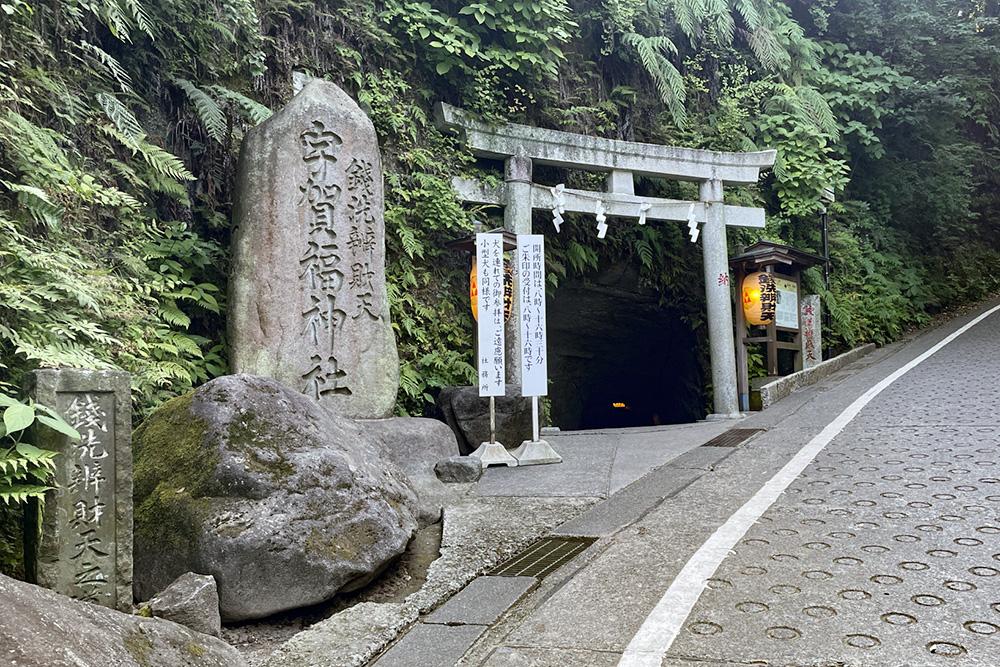
Hidden in a secluded valley surrounded by steep ridges, Zeniarai Benzaiten Ugafuku Shrine is one of Kamakura’s most unique and mysterious spiritual sites. Long regarded as a sacred place where deities reside, the shrine is known for its distinctive ritual—washing money in its spring water to bring prosperity and good fortune.
A Shrine Born from a Samurai’s Vision
The origins of Zeniarai Benzaiten trace back to 1185 when Minamoto no Yoritomo, the founder of the Kamakura Shogunate, had a divine dream. In his vision, the deity Ugafuku appeared and instructed him to find a sacred spring in the northwest valley and use its waters for worship. Upon waking, Yoritomo sent his men to search for the spring, which they discovered flowing from between the rocks. He then ordered the construction of a cave and shrine to enshrine the deity, believing that the sacred water would bring peace and stability to the land. Later, the influential regent Hōjō Tokiyori also venerated the shrine and encouraged people to visit, reinforcing its spiritual significance.
The Ritual of Washing Money
Over time, a folk belief emerged that washing money in the shrine’s sacred water would cleanse it and bring wealth and prosperity. This practice, popularized by Hōjō Tokiyori, led to the shrine’s nickname, “Zeniarai” (meaning “money-washing”). According to tradition, money purified in the spring will return in greater abundance, making this a must-visit spot for those seeking financial blessings. Even today, visitors can partake in the ritual by rinsing their coins and bills using bamboo baskets provided at the shrine.
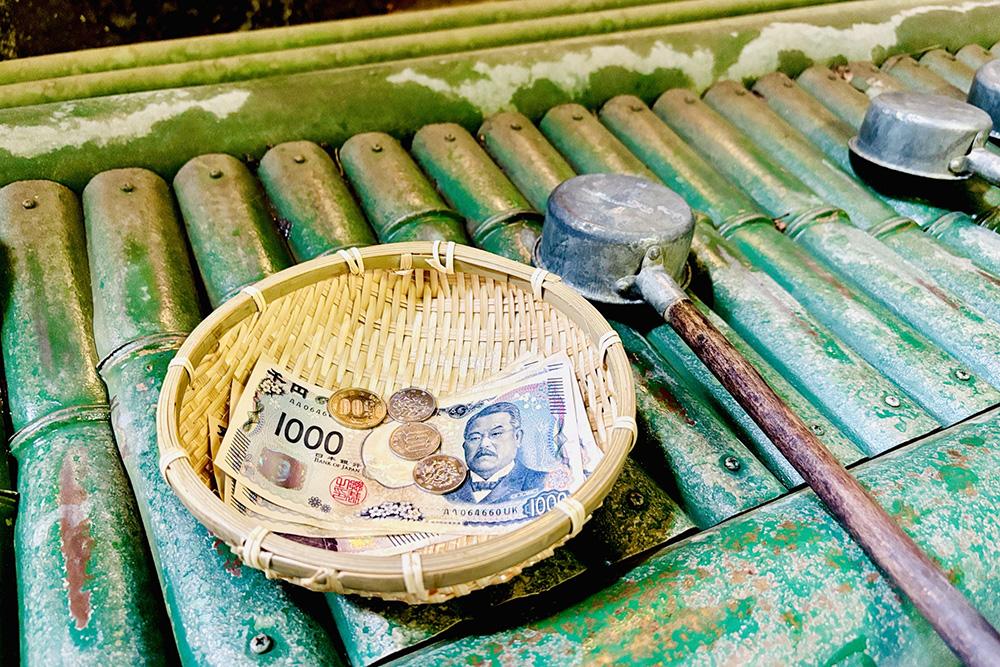
A Mystical Journey Through the Cave Entrance
One of the most striking aspects of Zeniarai Benzaiten is its entrance—a large cave carved into a rock face, leading visitors into a hidden sanctuary. This otherworldly passage adds to the shrine’s mystical atmosphere, making it a truly unique destination in Kamakura.
| Name | Zeniaraibenzaiten Ugafukujinja Shrine |
| Address | 2-25-16 Sasuke, Kamakura, Kanagawa (map) |
| Opening Hours | 8:00am-4:30pm (entrance open until 4:00pm) |
| Admission Fees | Donation |
| Travel Time | 25 minutes on foot from the west exit of JR Kamakura Station |
| Website | None |
Kencho-ji Temple: The Oldest Zen Training Monastery in Japan
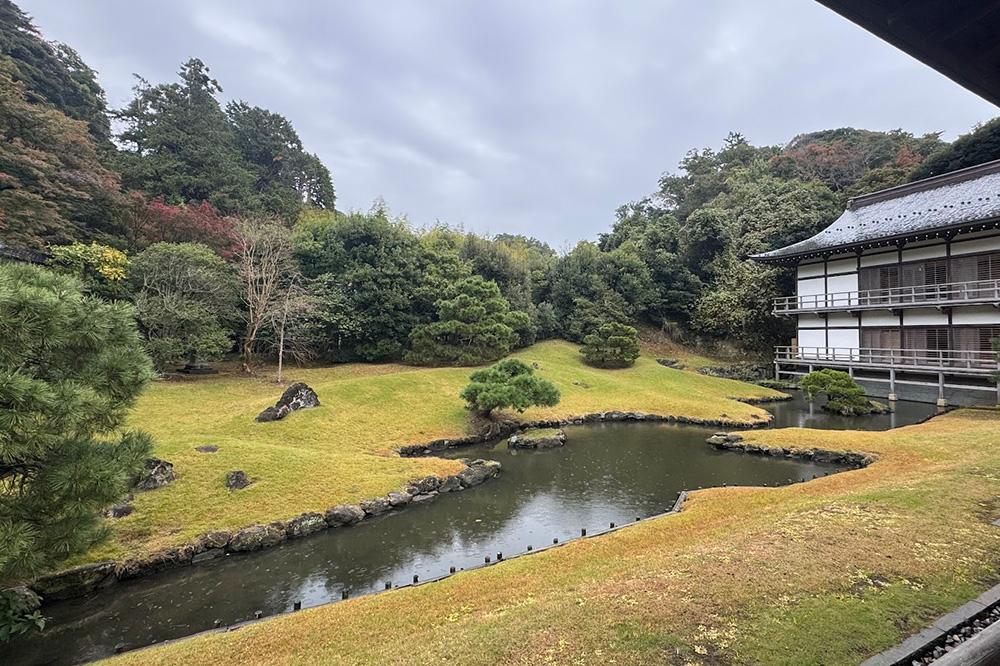
Kencho-ji Temple is one of Kamakura’s most historically significant Zen temples. As the head temple of the Kencho-ji school of the Rinzai sect, it holds the prestigious position of being the first-ranked temple among Kamakura’s Five Great Zen Temples.
A Temple with Deep Zen Roots
Established in 1253 by the ruling regent Hōjō Tokiyori, Kencho-ji was built as Japan’s first dedicated Zen training monastery under the guidance of the Chinese monk Rankei Doryu. The temple was modeled after prominent Chinese Zen monasteries, with its original layout featuring structures aligned in a straight axis. Despite enduring multiple fires and earthquakes, Kencho-ji has been rebuilt several times, preserving its role as a major center for Zen practice.
Cultural Treasures and Architectural Highlights
The temple’s main deity is a wooden statue of Jizo Bodhisattva. Among its many cultural treasures, the most notable is a portrait of Rankei Doryu, designated as a National Treasure. The temple also houses an impressive bronze bell, cast in 1255, renowned as one of the most exquisite in eastern Japan. Inside the Dharma Hall, visitors can marvel at the ceiling painting of a dragon, a masterpiece created by modern Japanese artist Junzo Koizumi.
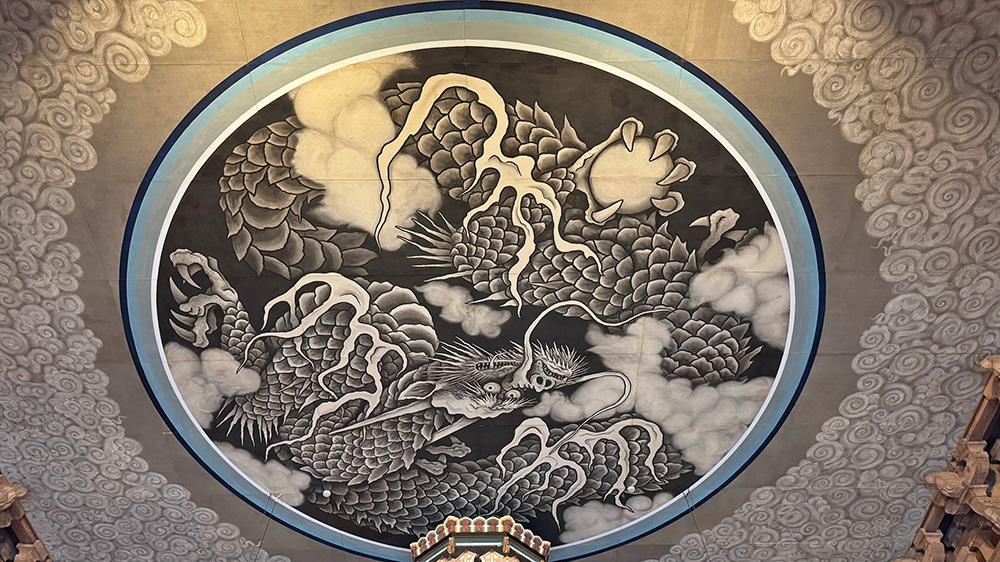
Zen Practices and Scenic Walks
Kencho-ji is not just a historic site but an active temple offering opportunities for visitors to engage in Zen practices. Weekly meditation sessions are held on Fridays and Saturdays, and those interested in calligraphy can participate in daily sutra-copying activities for a small fee. At the temple’s rear, the path leads to Hansobo Shrine, a sacred site with stunning city views and access to the Ten-en Hiking Trail, making Kencho-ji a perfect blend of spiritual retreat and scenic exploration.
| Name | Kenchoji Temple |
| Address | 8 Yamanouchi, Kamakura, Kanagawa(map) |
| Opening Hours | 8:30am – 4:30pm |
| Admission Fees | Adults: ¥500 (high school students and above) Children: ¥200 (elementary and junior high school students) *Please pay the fee even if you are hiking in the mountains. |
| Travel Time | From JR Kita-Kamakura Station, walk towards Kamakura Station for about 15 minutes |
| Website | https://www.kenchoji.com/ |
Engaku-ji Temple: A Zen Sanctuary Honoring the Past
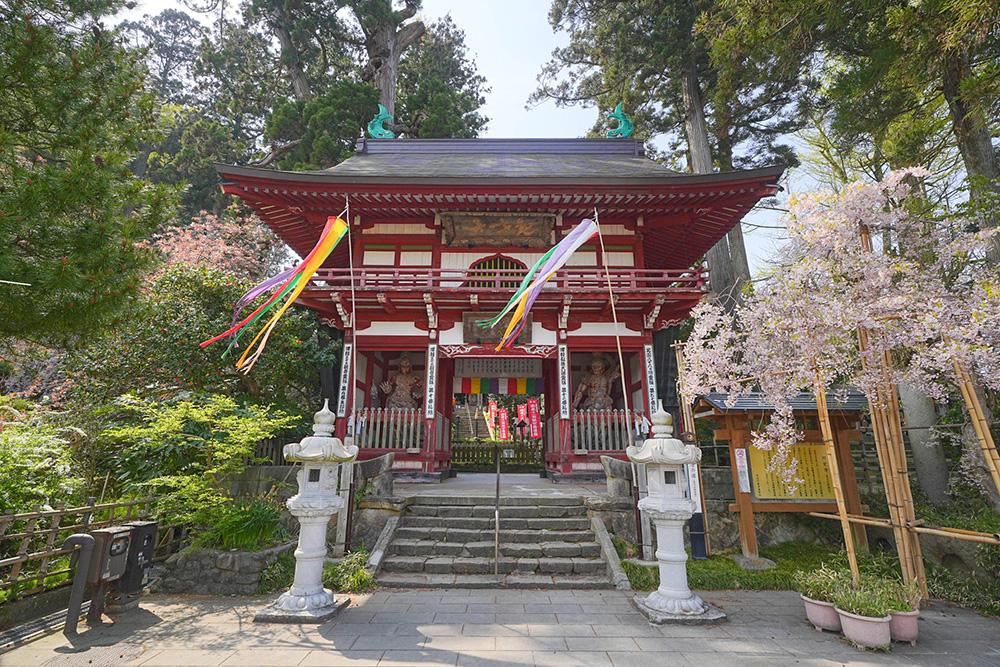
Engaku-ji Temple, founded in 1282 by Hōjō Tokimune, the eighth regent of the Kamakura shogunate, is one of Kamakura’s most significant Zen temples. Established under the guidance of the Chinese monk Mugaku Sogen, the temple was built to honor the fallen soldiers of both Japan and Mongolia during the Mongol invasions. Today, it serves as the head temple of the Engaku-ji branch of the Rinzai Zen sect and holds the distinguished rank of second among Kamakura’s Five Great Zen Temples.
Historical Significance and Architectural Wonders
The temple’s principal deity is the Jeweled Crown Shakyamuni Buddha, enshrined in the main hall. Engaku-ji’s serene grounds feature scenic ponds, such as Myōkō Pond and Shirasagi Pond, both recognized as nationally designated scenic spots. One of the temple’s most remarkable structures is the Shariden, a National Treasure, which houses sacred Buddhist relics and exemplifies exquisite Muromachi-period architecture. This hall is only open to the public on special occasions.
The Great Bell and the Symbolic Dragon
Ascending a steep stone staircase east of the main gate, visitors will find the monumental Great Bell, or “Ōgane,” cast in 1301 under the ninth regent Hōjō Sadatoki. As the largest bell in the Kanto region, it is a striking example of Kamakura-era craftsmanship and has been designated a National Treasure. Another fascinating feature of Engaku-ji is its ceiling painting of a dragon. Unlike the five-clawed dragon depicted in nearby Kencho-ji, the dragon here has three claws, a symbolic difference that distinguishes the temple’s artistic style.
| Name | Engakuji Temple |
| Address | 409 Yamanouchi, Kamakura, Kanagawa (map) |
| Opening Hours | March to November: 8:30am to 4:30pm (leave the grounds at 5:00pm) December to February: 8:30am to 4:00pm (leave the grounds at 4:30pm) |
| Admission Fees | Adults: ¥500 Elementary and junior high school students: ¥200 |
| Travel Time | 1 minute walk from JR Kita-Kamakura Station |
| Website | https://www.engakuji.or.jp/en/ |
Komachi Street: The Bustling Heart of Kamakura
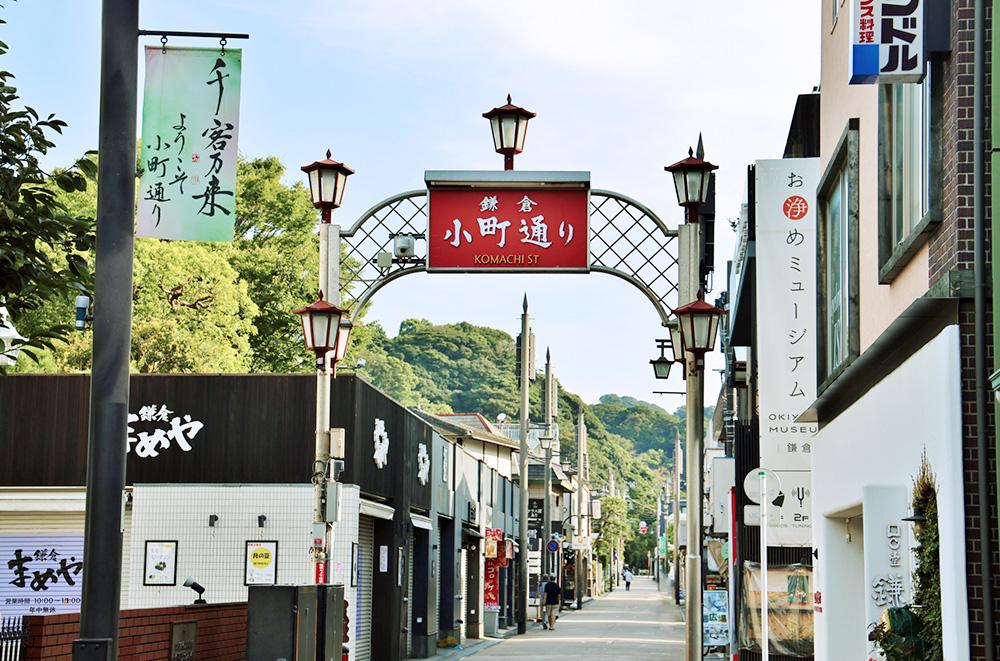
Komachi Street is a lively shopping avenue stretching from JR Kamakura Station’s east exit to Tsurugaoka Hachimangu Shrine. Running parallel to Wakamiya Ōji Street, this vibrant thoroughfare is a must-visit destination where tradition meets modernity, offering a diverse array of shops, eateries, and cultural experiences.
A Blend of History and Contemporary Charm
As Kamakura’s main shopping street, Komachi-dori attracts both locals and tourists with its unique mix of old and new. Over 300 shops line the street, ranging from long-established stores with a nostalgic Showa-era atmosphere to trendy boutiques showcasing the latest fashions. Visitors can explore a variety of offerings, including local delicacies, artisanal crafts, souvenirs, and hands-on experiences, making it an ideal place to discover Kamakura’s rich culture and flavors.
Shopping, Dining, and Local Etiquette
Komachi Street is not just about shopping—it’s also a food lover’s paradise, featuring popular cafes, traditional sweets, and specialty restaurants. However, to maintain the area’s beauty and cleanliness, visitors are encouraged to dispose of trash at the shop where they made their purchase or take it home. Street smoking is prohibited, with designated smoking areas available. Additionally, eating while walking or bringing outside food into stores is discouraged to preserve the pleasant shopping environment.
| Name | Komachi Street |
| Opening Hours | Komachi Street is open 24 hours a day, but most shops open between 9:00 and 10:00 AM and close around 5:00 to 6:00 PM. |
| Travel Time | 2 minutes walk from the east exit of JR “Kamakura Station” |
| Website | None |
The Famous Railroad Crossing Near Kamakura Kokomae Station
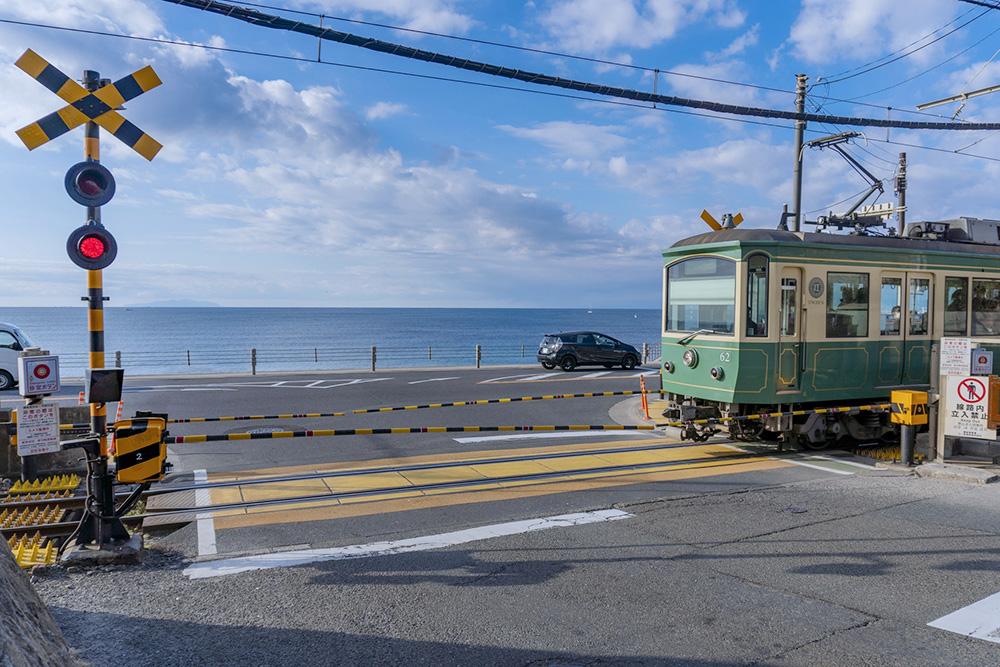
Located near Enoden’s Kamakura Kokomae Station, this scenic railroad crossing is a must-visit spot for anime fans and photography enthusiasts alike. With the nostalgic Enoden trains passing by and the sparkling Sagami Bay in the background, this location offers one of Kamakura’s most iconic seaside views.
A Legendary Anime Location
This railroad crossing gained worldwide recognition as the model for the opening scene of the anime Slam Dunk, a beloved basketball series. Fans of the anime often visit to recreate the famous moment where the protagonist stands before the crossing, watching the train pass with the ocean behind it. Positioned about 100 meters from Kamakura Kokomae Station toward Shichirigahama, the site has become a popular pilgrimage spot for anime enthusiasts.
Capturing the Perfect Shot—With Courtesy
While the crossing is a fantastic photo location, it is also an active railway and a public roadway. Visitors should be mindful of traffic, avoid blocking pedestrians, and refrain from standing on the tracks. Additionally, it is important to respect local residents by keeping noise levels low, taking trash with you, and ensuring that photography does not disrupt the area’s daily life.
| Name | Kamakura Kokomae No. 1 Railroad Crossing(map) |
| Travel Time | 2-minute walk from Kamakura Kokomae Station on the Enoden Line. |
Activities in Kamakura
Choya Ume Experience: Create Your Own Plum Syrup or Plum Wine
Choya, Japan’s leading umeshu (plum wine) producer, offers a unique hands-on experience where visitors can craft their own plum syrup or plum wine. With over 100 possible ingredient combinations, this activity allows guests to create a personalized blend, making it a fun and interactive way to learn about Japan’s plum culture.
A Customizable Plum Experience
At the Choya Ume Experience store, visitors can reserve a session to mix and match ingredients, designing their own original plum-based creation. While reservations are required for the hands-on experience, walk-in guests can still enjoy takeout drinks made with fresh plum syrup or purchase limited-edition umeshu, available only at the store.
A Hidden Gem in a Renovated Traditional House
Located in a beautifully restored traditional Japanese home, the store features a minimalist design with a subtle white sign—so keep an eye out to avoid missing it! Popular souvenirs include take-home “Choya Ume Kits,” allowing visitors to continue the plum-making experience at their hotel or home, as well as store-exclusive umeshu varieties.
Due to its popularity, early reservations are highly recommended for those wanting to participate in the plum-making workshop.
| Name | Choya (Kamakura branch) |
| Address | Kamakura Onarimachi Hakua 1F, 11-7 Onarimachi, Kamakura, Kanagawa (map) |
| Opening Hours | 10:00AM – 6:00PM (7:00PM on Saturdays and Sundays) Holidays: New Year holidays |
| Travel Time | 1 minute walk from West Exit of Enoshima Electric Railway and JR Kamakura Station *No parking or bicycle parking |
| Website | https://choyaume.jp/en/pages/kamakura |
Yuigahama Beach: Kamakura’s Coastal Getaway
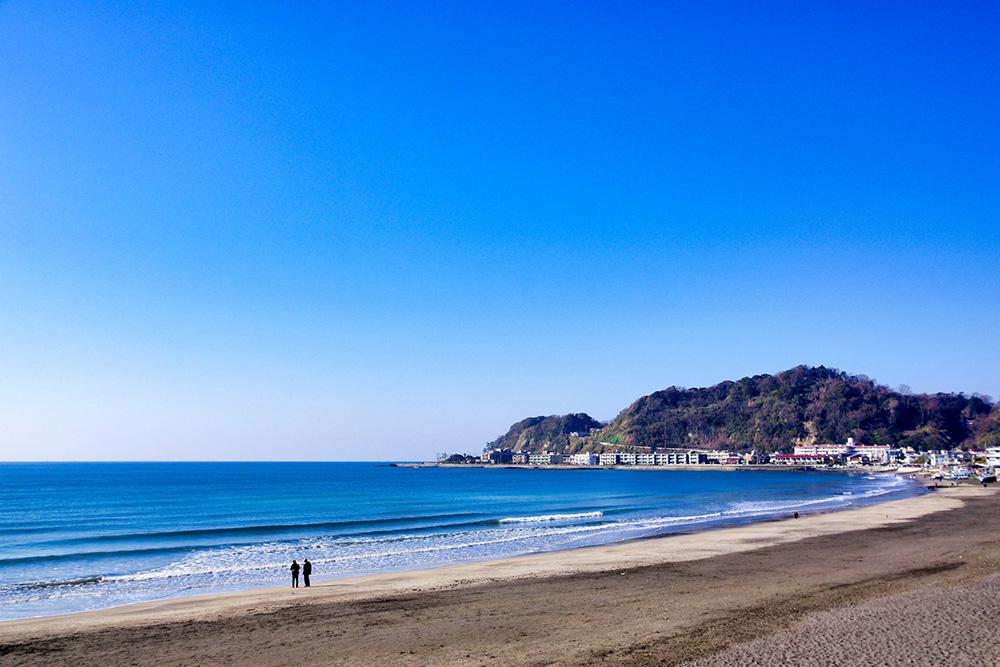
Yuigahama Beach, located just a five-minute walk from Yuigahama Station, is one of Kamakura’s most popular seaside destinations. With its gentle waves and relaxed atmosphere, this beach is ideal for bodyboarding, windsurfing, and stand-up paddleboarding (SUP). During the off-season, it transforms into a quiet retreat, perfect for enjoying the scenic coastline at a leisurely pace.
A Summer Hotspot with Vibrant Beach Houses
In the summer, Yuigahama comes alive with a variety of beach houses offering everything from classic Japanese festival foods like yakisoba and kakigori (shaved ice) to international cuisine, including Thai dishes and Mediterranean-style beachfront dining. The area also hosts temporary stalls by well-known restaurants, adding to the seasonal charm.
A Beach with a Deep History
Beyond its modern appeal, Yuigahama has a storied past. During the Kamakura period, it was used as a site for executions and cremations, a stark contrast to its present-day image as a leisure destination. A stone monument on Yuigahama Street commemorates Taira no Morihisa, a samurai who narrowly escaped execution here. It wasn’t until the Meiji era that the beach began to be enjoyed as a recreational spot, marking a shift from its historical significance to a place of relaxation and enjoyment.
| Name | Yuigahama Beach |
| Map | map |
| Parking | There is a prefectural Yuigahama underground parking lot nearby. 188 spaces for regular cars (6 of which are for disabled people) / 12 spaces for large cars Summer (July 1st to August 31st): 6:00-21:00 / ¥260 for regular cars / ¥790 for large cars Outside of the above period: 9:00-18:00 / ¥210 for regular cars / ¥630 for large cars Overnight rate: From closing time to opening time the next day / ¥1,040 for regular cars / ¥3,140 for large cars Park and ride: 9:00-18:00 / ¥1,700 per car |
| Travel Time | 15 minute walk from JR Yokosuka Line/Enoshima Electric Railway Kamakura Station. Or 5 minute walk from Enoshima Electric Railway Wadazuka Station, Yuigahama Station, or Hase Station. |
Restaurants and Cafés
Matsubara-an: A Refined Soba Dining Experience in Kamakura
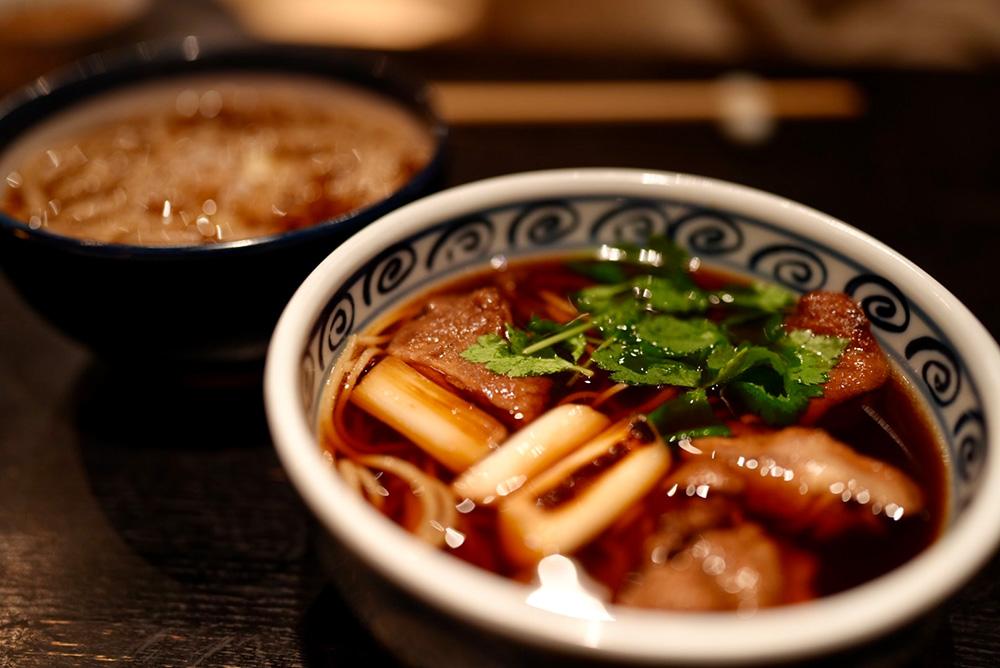
Matsubara-an is a charming soba restaurant housed in a beautifully renovated traditional home, blending rustic elegance with a modern, sophisticated touch. Known for its serene atmosphere, the restaurant has three locations in Kamakura, each with a distinct design. The main branch, just a three-minute walk from Yuigahama Station, features an inviting terrace surrounded by lush greenery, offering a tranquil dining experience.
Matsubara-an specializes in handcrafted soba, made daily in-house using carefully selected buckwheat flour. Their signature dish, Kamo Seiro, features thin, firm soba noodles served with a rich, flavorful duck broth and tender slices of duck meat. The menu also includes a variety of traditional Japanese side dishes such as seared duck breast, tamagoyaki (Japanese omelet), and seasonal tempura made with fresh seafood and vegetables from Kamakura.
Complementing the food, Matsubara-an boasts an extensive drink selection, including sake, wine, cocktails, fruit liqueurs, and beer. The restaurant also offers course menus and seasonal vegetable dishes like bagna càuda and fresh salads, making it an ideal spot for both casual dining and special occasions.
| Name | Matsubara-an |
| Address | 4-10-3 Yuigahama Kamakura Kanagawa (map) |
| Opening Hours | 11:00 ~ 21:30(20:30 LO) Open every day |
| Travel Time | 3-minute walk from Yuigahama Station on the Enoden Line. |
| Website | https://matsubara-an.com/ |
Mushinan: A Charming Traditional Teahouse by the Enoden Railway
Nestled just across the Enoden railway tracks, Mushinan is a serene Japanese-style café housed in a beautifully renovated sukiya-style residence from the Taisho era. This historic teahouse offers a peaceful escape, where guests can savor seasonal Japanese sweets while surrounded by a lush garden featuring over 130 plant species, including maple trees, camellias, hydrangeas, and orchids.
Authentic Japanese Sweets in a Timeless Setting
Mushinan is renowned for its signature Cream Anmitsu, a delightful dessert featuring smooth red bean paste, fresh fruit, agar jelly, and sweet red peas, topped with a generous scoop of ice cream. Guests can also enjoy unlimited refills of kuromitsu (black sugar syrup) to enhance the flavors. Another popular choice is Mamekan, a simple yet refined dish of Hokkaido-grown red peas simmered for three days to achieve the perfect texture.
The menu changes with the seasons, offering refreshing chilled treats in summer and comforting warm dishes in winter, such as Inaka Shiruko, a traditional sweet red bean soup. Every element, from the careful seasoning adjustments to the repurposed obi fabric tablecloths, adds to the café’s charm. The gentle sound of the Enoden train passing by further enhances the nostalgic ambiance, making Mushinan a perfect spot to relax and immerse yourself in Kamakura’s timeless atmosphere.
| Name | Mushin-an |
| Address | 3-2-13 Yuigahama, Kamakura, Kanagawa (map) |
| Opening Hours | 10:00 ~ 17:00 No last order time, Closed on Thursdays (open on public holidays) |
| Travel Time | 1-minute walk from Wadazuka Station on the Enoden Line. |
| Website | https://www.instagram.com/kamakura_musinan/ |
How to Get to Kamakura from Tokyo
Getting to Kamakura from central Tokyo is easy and convenient by train. Here are two popular routes:
From Tokyo Station
Take the JR Yokosuka Line from Platform 1, boarding a train bound for Zushi or Kurihama. The ride takes about one hour with no transfers, and costs ¥945 one way (as of 2025). Trains depart every 7 to 9 minutes.
Be careful not to board a train bound only for Ofuna, as it does not continue to Kamakura.
From Shinjuku or Shibuya Station
Hop on the JR Shonan-Shinjuku Line and take a train bound for Zushi. This route also takes around one hour, with no transfers, and the fare is ¥945 one way (as of 2025). Trains to Zushi typically depart from Platform 1.
Only Zushi-bound trains stop at Kamakura—some Shonan-Shinjuku Line trains skip it entirely. Zushi-bound trains run approximately every 30 minutes.
How to Get around Kamakura
Kamakura offers a variety of ways to explore the area, including trains, buses, and walking. Here’s an overview of the options available for getting around and reaching key attractions.
Enoden (The Enoshima Electric Line)
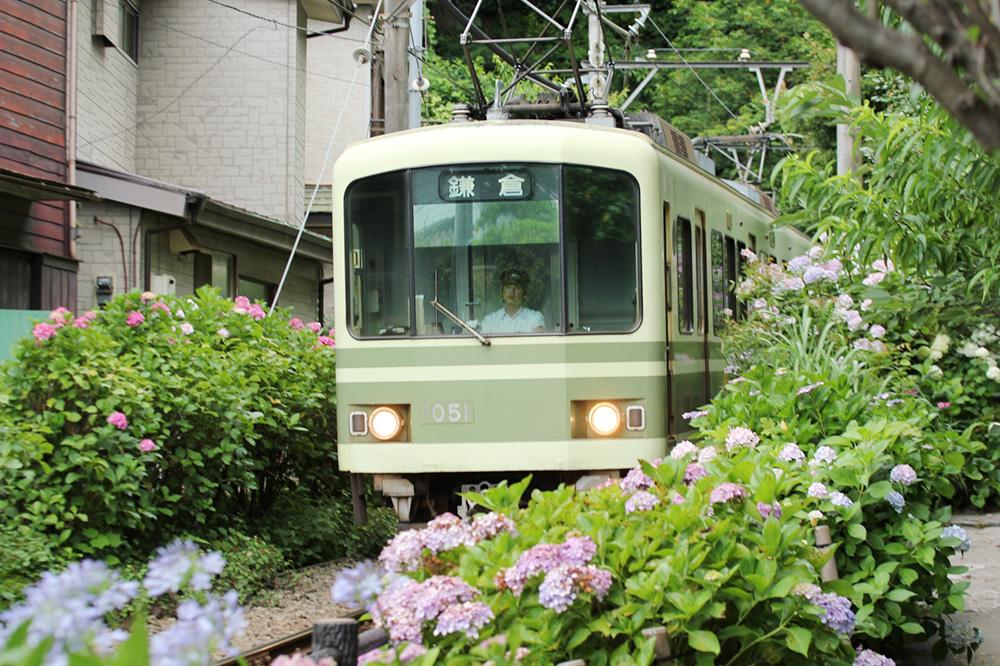
The Enoshima Electric Railway—commonly known as “Enoden”—is more than just a way to get around Kamakura. This retro-style train line is a beloved attraction in itself, connecting Kamakura Station (served by the JR Yokosuka Line) with Fujisawa Station (served by the JR Tokaido Line and Odakyu Line).
Running along a picturesque route dotted with temples, seaside cafés, and filming locations from Japanese dramas and movies, the Enoden is a favorite among visitors. One of its most unforgettable features is the view from the train: you’ll pass through narrow streets lined with traditional homes, ride alongside car traffic, and suddenly emerge to sweeping views of Yuigahama Beach, Enoshima Island, and—on a clear day—the majestic silhouette of Mt. Fuji.
Its vintage trains and charming slow pace make the ride feel like stepping back in time. Whether you’re heading to popular stops like Hase (home to the Great Buddha) or simply taking in the scenery, riding the Enoden is an essential part of any Kamakura day trip.
You can use transportation IC cards like Suica and Pasmo to board the Enoden. If you don’t have an IC card, you can also purchase individual tickets at the station ticket machines. Additionally, the Enoden One-Day Pass (introduced later in this guide) allows unlimited rides for a flat rate—perfect for exploring multiple stops in one day.
Local Kamakura buses
While many of Kamakura’s main attractions are within walking distance, some temples and shrines are located in more remote areas that are best reached by bus. If you want to make the most of a single day and visit multiple locations efficiently, combining walking with bus travel is highly recommended.
The two main bus operators in Kamakura are Keikyu Bus and Enoden Bus. Most buses accept IC cards such as Suica and Pasmo. If you don’t have one, you can buy single-ride tickets from the onboard machines or at bus stops. A one-day unlimited bus pass—covered later in this guide—is also available and can be a great value.
To ride the bus, board from the front door and tap your IC card or pay in cash when you get on. Don’t forget to press the stop button before your destination. On some buses, you can also board through the middle door. If paying in cash, be sure to take a boarding ticket when you enter—it will be needed to calculate your fare when you get off.
Kamakura Free Kankyo Tegata Pass (Kamakura Free Environement Pass)
The Kamakura Free Kankyo Tegata is a convenient and cost-effective one-day pass that allows unlimited travel on select transportation within the Kamakura area. Perfect for day-trippers, this pass covers Enoden train rides between Kamakura Station and Hase Station, as well as five designated bus routes operated by Keikyu and Enoden bus services.
Simply show the pass to the driver or station staff when boarding or exiting. As long as it’s used on the day of purchase, you can hop on and off freely within the valid zones.
In addition to transportation, pass holders enjoy exclusive benefits at around 70 participating locations, including discounted admission to temples, shrines, and museums, complimentary charms or gifts, and special deals at local shops and cafes.
| Where to buy | Available at Enoden Kamakura Station, Enoden Hase Station, Keikyu Bus Kamakura Office, and the Keikyu Bus Kamakura Station Information Center. |
| Travel Time | Adults (12 and over): ¥900 Children (6–11): ¥450 |
If you’re planning to visit multiple sites in Kamakura, this pass offers excellent value and a smoother travel experience.
Rent a Bike Near Kamakura Station
Exploring Kamakura by bike is one of the best ways to enjoy its scenic streets and coastal atmosphere. Rental Kamakura Ekimae Store is conveniently located just outside the East Exit of Kamakura Station. Simply turn right after exiting, and you’ll find it at the end of the path, next to the coin lockers—just go up the stairs.
No reservation is needed. You can walk in and rent a bike on the spot. Standard bicycles cost ¥1,600 per day, while electric bikes are available for ¥2,500. If you’re only riding for a short time, hourly rates are also available for up to 4 hours.
The shop has a wide selection of 150 bicycles, from classic models to electric-assist bikes. For travelers with large luggage that doesn’t fit in a locker, the shop offers in-store luggage storage for an extra fee.
Bonus: You can even return your bike at Koike Shoten near Enoshima Station, making it easy to explore the entire area without doubling back.
| Name | Rental Bicycle Kamakura Station Front Store |
| Address | 1-1 Komachi, Kamakura, Kanagawa (map) |
| Opening Hours | 8:30-17:00 *Business hours vary depending on the season |
| Price | Regular bicycles 1day : ¥1,600 Electric bicycles 1day : ¥2,500 |
| Travel Time | 1 minute walk from the East Exit of Kamakura Station on the JR Line (behind the police box in front of the East Exit station) |
| Website | https://www.jrbustech.co.jp/wp/shop_service |
One day Kamakura Itinerary
Now getting stuck planning a day trip to Kamakura? This sample one-day itinerary will help you make the most of your visit, covering key sights, travel times, and tips to keep your day smooth and stress-free.
8:50 Depart from Tokyo Station
Take the JR Yokosuka Line from Platform 1 at Tokyo Station. Board a train bound for Zushi or Kurihama—no transfers needed. Kamakura Station is about one hour away.
10:00 Tsurugaoka Hachimangu Shrine (Stay: ~40 minutes)
Arrive in Kamakura and head to Tsurugaoka Hachimangu, the city’s most important Shinto shrine. With grand torii gates and seasonal flowers, it’s a peaceful introduction to Kamakura’s spiritual side.
11:00 Hokokuji Temple (Stay: ~40 minutes)
A short 10-minute taxi ride brings you to Hokokuji, also known as the Bamboo Temple. Enjoy walking through the serene bamboo grove and sipping matcha in the teahouse.
12:15 Komachi Street – Lunch & Shopping (Stay: ~90 minutes)
Take a taxi back toward the station and stroll Komachi Street. Packed with food stalls, cafés, and boutiques, it’s perfect for lunch and souvenir hunting.
14:00 Great Buddha (Stay: ~30 minutes)
Take the Enoden Line to Hase Station, a short ride from Kamakura. From there, it’s a 7-minute walk to the iconic Great Buddha of Kamakura—an open-air bronze statue over 11 meters tall.
14:45 Hase Temple (Stay: ~40 minutes)
Just a short walk away, tucked off to the right as you head back toward Hase Station, Hase Temple offers stunning ocean views, a beautiful garden, and a unique statue of Kannon, the goddess of mercy.
15:45 Yuigahama Beach (Stay: ~45 minutes)
Walk about 10 minutes from Hase Temple to Yuigahama Beach, a relaxing coastal spot loved by locals. Feel the sea breeze, take in ocean views, and enjoy a calm break before heading back to the city.
17:00 Return to Tokyo
Head back to Kamakura Station via Yuigahama Station on the Enoden Line, and board the Yokosuka Line to Tokyo.
Accomodations
Hotel Metropolitan Kamakura
Located just a 2-minute walk from JR Kamakura Station’s East Exit, Hotel Metropolitan Kamakura offers an ideal base for exploring the historic city. Nestled along the iconic Wakamiya Ōji Street, this hotel blends contemporary comfort with thoughtful hospitality. Each room is smoke-free and equipped with a spacious bathroom featuring a separate washing area—perfect for relaxing after a day of sightseeing.
Guests often praise the attentive service and well-stocked amenities. The rooms are minimalist yet refined, designed with subtle touches that reflect Japanese hospitality. Breakfast is served at the on-site MUJI Café, operated by the popular brand MUJI, offering a healthy and relaxed start to your day.
| Name | Hotel Metropolitan Kamakura |
| Address | 1-8-1, Komachi, Kamakura, Kanagawa (map) |
| Travel Time | 2-minute walk from JR Kamakura Station (east exit) |
| Website | https://kamakura.hotel-metropolitan.com/ |
Kamakura Prince Hotel
Just a short walk from Shichirigahama Station on the Enoden Line, Kamakura Prince Hotel offers stunning ocean views from every room. Ideal for travelers seeking a quiet retreat, the hotel is set slightly away from busy tourist spots, providing a serene, relaxed atmosphere.
Guests can enjoy a seasonal outdoor pool in summer and rent e-bikes for easy exploration of the scenic coastline. Whether you’re watching the sunset from your room or cruising along the seaside, this hotel combines natural beauty with restful comfort.
| Name | Kamakura Prince Hotel |
| Address | 1-2-18 Shichirigahama-higashi, Kamakura, Kanagawa (map) |
| Travel Time | A free shuttle bus runs between Shichirigahama Station and the hotel 8 minutes walk from Shichirigahama Station along the seaside road brings you to the Shichirigahama Banquet Hall. From there, take the incline elevator up to the hotel (operating hours: 7:00 A.M. – 10:00 P.M.). |
| Website | https://www.princehotels.com/kamakura/ |
Kamakura Park Hotel
Just a 10-minute taxi ride from Kamakura Station, Kamakura Park Hotel offers six types of rooms—including suites and traditional Japanese-style rooms—all with beautiful ocean views. Guests can unwind in the hotel’s unique enzyme bath, known for its detoxifying effects and improved circulation.
The on-site restaurants serve seasonal dishes made with fresh, local ingredients from Kamakura, offering a memorable culinary experience.
| Name | Kamakura Park Hotel |
| Address | 33-6 Skanoshita, Kamakura, Kanagawa,Japan 248-0021 (map) |
| Travel Time | 10minutes by car from JR Kamakura Station 12minutes walk from Hase Station on the Enoden Line |
| Website | https://www.kamakuraparkhotel.co.jp/en/ |
Tosei Hotel Cocone Kamakura
Located just a 4-minute walk from Kamakura Station, Tosei Hotel Cocone Kamakura is the perfect base for exploring top attractions like Tsurugaoka Hachimangu Shrine, Wakamiya Ōji Street, and Komachi Street. The hotel blends modern amenities with traditional Japanese design, making it ideal for travelers seeking an authentic cultural stay.
| Name | Tosei Hotel Cocone Kamakura |
| Address | 7-10-1 Onarimachi, Kamakura, Kanagawa |
| Travel Time | 4 minutes walk from the west exit of JR and Enoden Kamakura Station. |
| Website | https://tosei-hotel.co.jp/kamakura/ |

